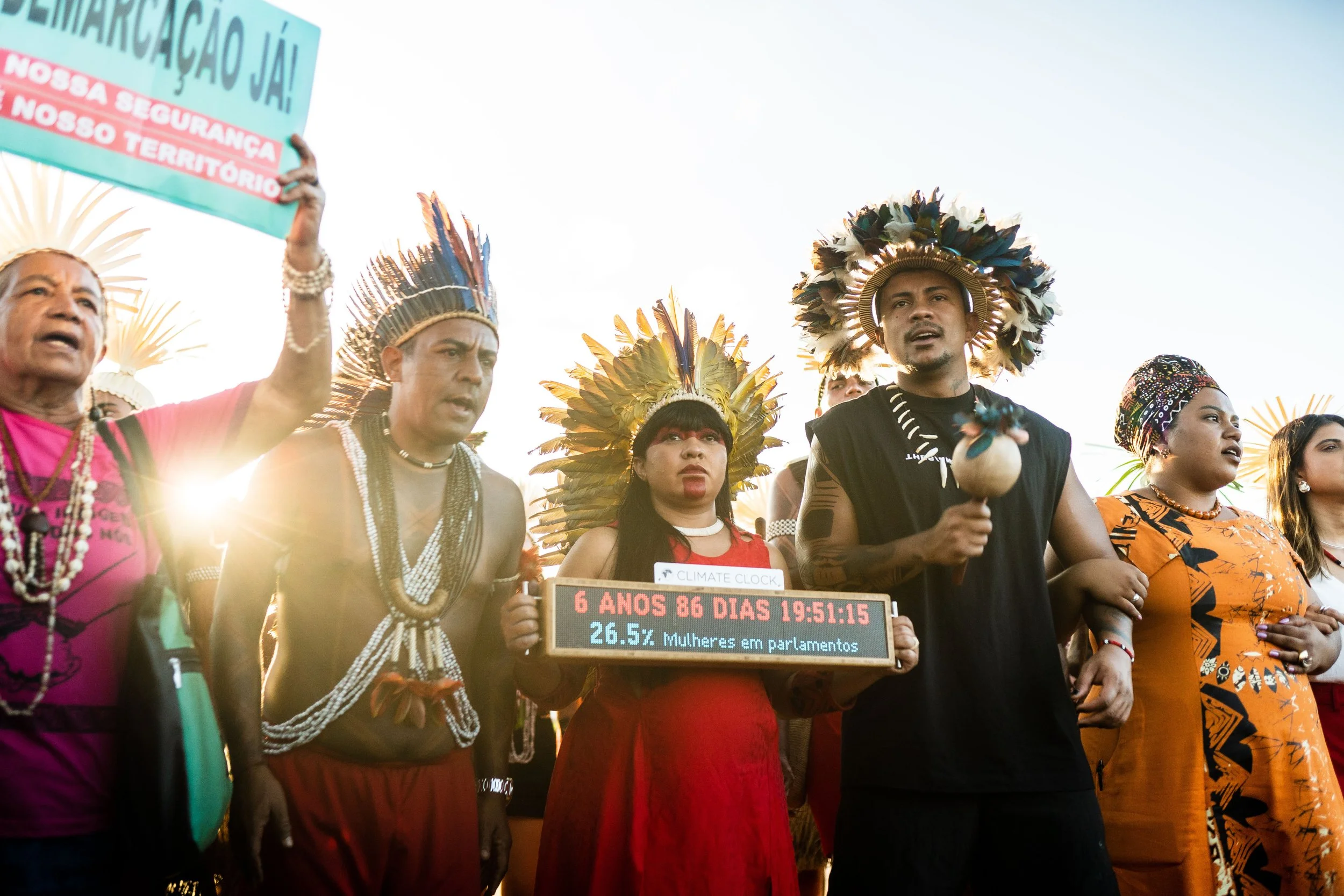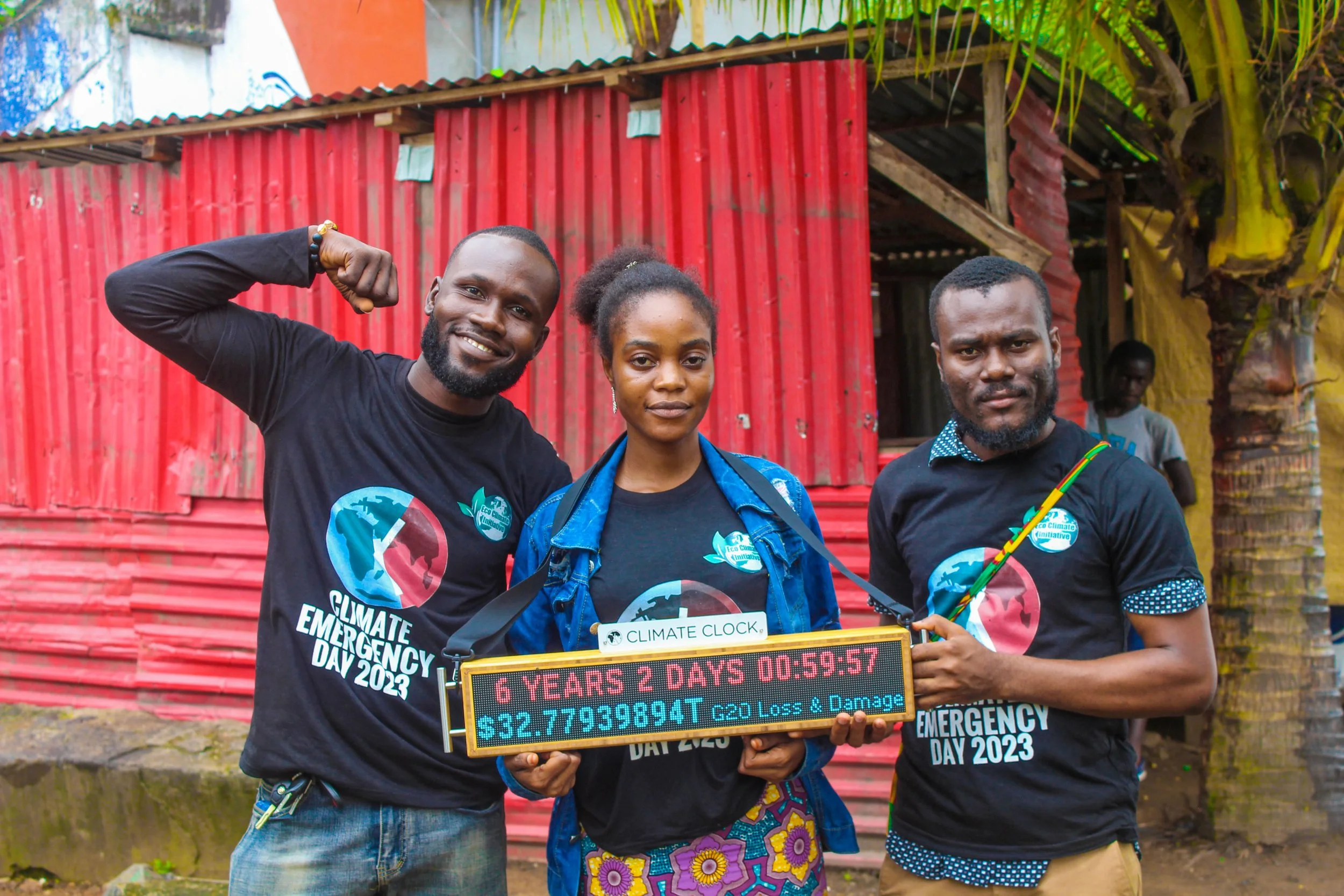Lifeline:
GENDER PARITY
Numerous studies show that gender parity in national governance is crucial for addressing climate change. Across the world, women's movements and climate justice movements are working to raise women's representation in parliaments from the current 27.2% to 50% or more in order to better combat the unfolding threat of climate change.
Why Gender Parity in Government?
Research has demonstrated that when women participate in decision-making processes, their communities benefit from more effective risk management and increased commitment to climate policies that reduce carbon dioxide emissions. Countries with higher female representation in parliaments have shown significant increases in per capita forest cover. The Paris Agreement recognizes the importance of women's participation in achieving climate justice and emphasizes gender equality and women's empowerment in policy design. Women's disproportionate vulnerability to climate breakdown further emphasizes the need for their leadership and inclusion in decision-making spaces.
The Goal: Achieve Full Gender Parity
Through this lifeline, we aim to advocate for and work towards achieving gender parity in national parliaments. This goal aligns with principles of justice, democracy, and survival, as gender equality is vital for addressing climate change effectively. By empowering women and increasing their representation in decision-making spaces, we can enhance climate resilience, promote equitable solutions, and ensure a more just and sustainable future for all.
Data
Even after centuries of struggle, women’s political representation is only 26.8%. Meanwhile, historical inequalities have perpetuated the disadvantaged position of women, making them more adversely affected by climate breakdown and disruptions compared to men. Climate justice principles require taking leadership from the most impacted and acknowledging their insights into necessary solutions. Women and girls face increased vulnerability, limited access to resources, assets, services, and participation in decision-making spaces, exacerbating the differential impact on them. Furthermore, they are more likely to experience gender-based violence following disasters, reducing their adaptive capacity and resilience, thereby weakening the future resilience of communities.
According to the International Parliamentary Union (IPU), women's representation in all national parliaments currently stands at 26.8%. Numerous studies establish a positive correlation between female representation in parliaments and the effectiveness of climate action. For instance, countries with 38% or more women legislators exhibit substantial increases in per capita forest cover. Such data demonstrates the tangible benefits of gender parity in national governance.
How to Use This Lifeline:
Promote gender equality in climate governance by supporting initiatives that work to increase women’s political representation. Share this lifeline to highlight the importance of women's leadership in the fight against climate change.
VIEW LIFELINES
Renewable Energy
Tracking the percent of global energy coming from renewable sources – wind, water, solar, and bioenergy. It currently stands at 13.5% and is rising, but extremely slowly.
Indigenous Land Sovereignty
Displays the total area of land and inland waters currently managed by Indigenous Peoples and Local Communities (IPLCs) worldwide.
Climate Finance
Tracks the climate debt owed by wealthy, high-emitting G20 countries for the impacts their carbon emissions have caused, especially to those in "developing" countries.




